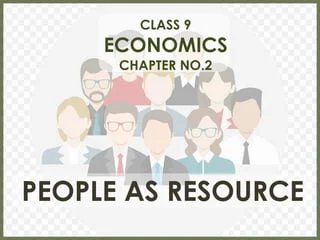Forms of Market and Price Determination under perfect competition with simple applications - Class 11
Perfect competition is a market structure characterized by numerous small buyers and sellers, homogeneous products, perfect information, and no barriers to entry or exit. In a perfectly competitive market, price is determined by the intersection of supply and demand curves. Key Concepts: Perfect Competition: Characteristics, assumptions, and implications. Demand and Supply Curves: How demand and supply curves intersect to determine the equilibrium price and quantity. Equilibrium Price: The price at which the quantity demanded equals the quantity supplied. Equilibrium Quantity: The quantity of a good or service that is bought and sold at the equilibrium price. Marginal Cost: The additional cost of producing one more unit of a good or service. Marginal Revenue: The additional revenue earned from selling one more unit of a good or service. Importance of Perfect Competition: Efficiency: Perfect competition leads to efficient allocation of resources. Price Determination: In a perfectly competitive market, price is determined by market forces, not by individual firms. Innovation: Perfect competition can encourage innovation and efficiency. Simple Applications of Perfect Competition: Agricultural Markets: Many agricultural markets are considered to be perfectly competitive, with numerous small farmers and standardized products. Stock Market: The stock market is often modeled as a perfectly competitive market, with many buyers and sellers trading identical shares of stock. In Class 11, students will learn the basic concepts of perfect competition and how price is determined in such a market. They will study demand and supply curves, equilibrium price and quantity, and the implications of perfect competition. This knowledge will be essential for understanding market structures and how prices are set in different economic environments. নিখুঁত প্রতিযোগিতা হল একটি বাজার কাঠামো যা অসংখ্য ছোট ক্রেতা এবং বিক্রেতা, সমজাতীয় পণ্য, নিখুঁত তথ্য এবং প্রবেশ বা প্রস্থানের কোনও বাধা দ্বারা চিহ্নিত। একটি নিখুঁত প্রতিযোগিতামূলক বাজারে, সরবরাহ এবং চাহিদা বক্ররেখার ছেদ দ্বারা মূল্য নির্ধারিত হয়। মূল ধারণাগুলিঃ নিখুঁত প্রতিযোগিতাঃ বৈশিষ্ট্য, অনুমান এবং প্রভাব। চাহিদা ও সরবরাহের বক্ররেখাঃ ভারসাম্য মূল্য ও পরিমাণ নির্ধারণের জন্য চাহিদা ও সরবরাহের বক্ররেখা কীভাবে ছেদ করে। সামঞ্জস্য মূল্যঃ যে দামে চাহিদার পরিমাণ সরবরাহকৃত পরিমাণের সমান হয়। সামঞ্জস্যের পরিমাণঃ একটি পণ্য বা পরিষেবার পরিমাণ যা সামঞ্জস্য মূল্যে কেনা এবং বিক্রি করা হয়। প্রান্তিক খরচঃ একটি পণ্য বা পরিষেবার আরও একটি ইউনিট উৎপাদনের অতিরিক্ত খরচ। প্রান্তিক রাজস্বঃ একটি পণ্য বা পরিষেবার আরও একটি ইউনিট বিক্রি করে অর্জিত অতিরিক্ত রাজস্ব। নিখুঁত প্রতিযোগিতার গুরুত্বঃ দক্ষতাঃ নিখুঁত প্রতিযোগিতা সম্পদের দক্ষ বরাদ্দের দিকে পরিচালিত করে। মূল্য নির্ধারণঃ একটি নিখুঁত প্রতিযোগিতামূলক বাজারে, মূল্য নির্ধারণ করা হয় বাজারের শক্তি দ্বারা, পৃথক সংস্থা দ্বারা নয়। উদ্ভাবনঃ নিখুঁত প্রতিযোগিতা উদ্ভাবন এবং দক্ষতাকে উৎসাহিত করতে পারে। নিখুঁত প্রতিযোগিতার সহজ প্রয়োগঃ কৃষি বাজারঃ অনেক কৃষি বাজারকে নিখুঁত প্রতিযোগিতামূলক বলে মনে করা হয়, যেখানে অসংখ্য ক্ষুদ্র কৃষক এবং মানসম্মত পণ্য রয়েছে। শেয়ার বাজারঃ শেয়ার বাজারকে প্রায়শই একটি নিখুঁত প্রতিযোগিতামূলক বাজার হিসাবে মডেল করা হয়, যেখানে অনেক ক্রেতা এবং বিক্রেতা শেয়ারের অভিন্ন শেয়ারের লেনদেন করে। একাদশ শ্রেণিতে, শিক্ষার্থীরা নিখুঁত প্রতিযোগিতার মৌলিক ধারণাগুলি এবং এই ধরনের বাজারে কীভাবে মূল্য নির্ধারণ করা হয় তা শিখবে। তারা চাহিদা ও সরবরাহের বক্ররেখা, ভারসাম্য মূল্য ও পরিমাণ এবং নিখুঁত প্রতিযোগিতার প্রভাবগুলি অধ্যয়ন করবে। বাজারের কাঠামো এবং বিভিন্ন অর্থনৈতিক পরিবেশে কীভাবে মূল্য নির্ধারণ করা হয় তা বোঝার জন্য এই জ্ঞান অপরিহার্য হবে।
English
Last updated
Wed, 27-Nov-2024



















